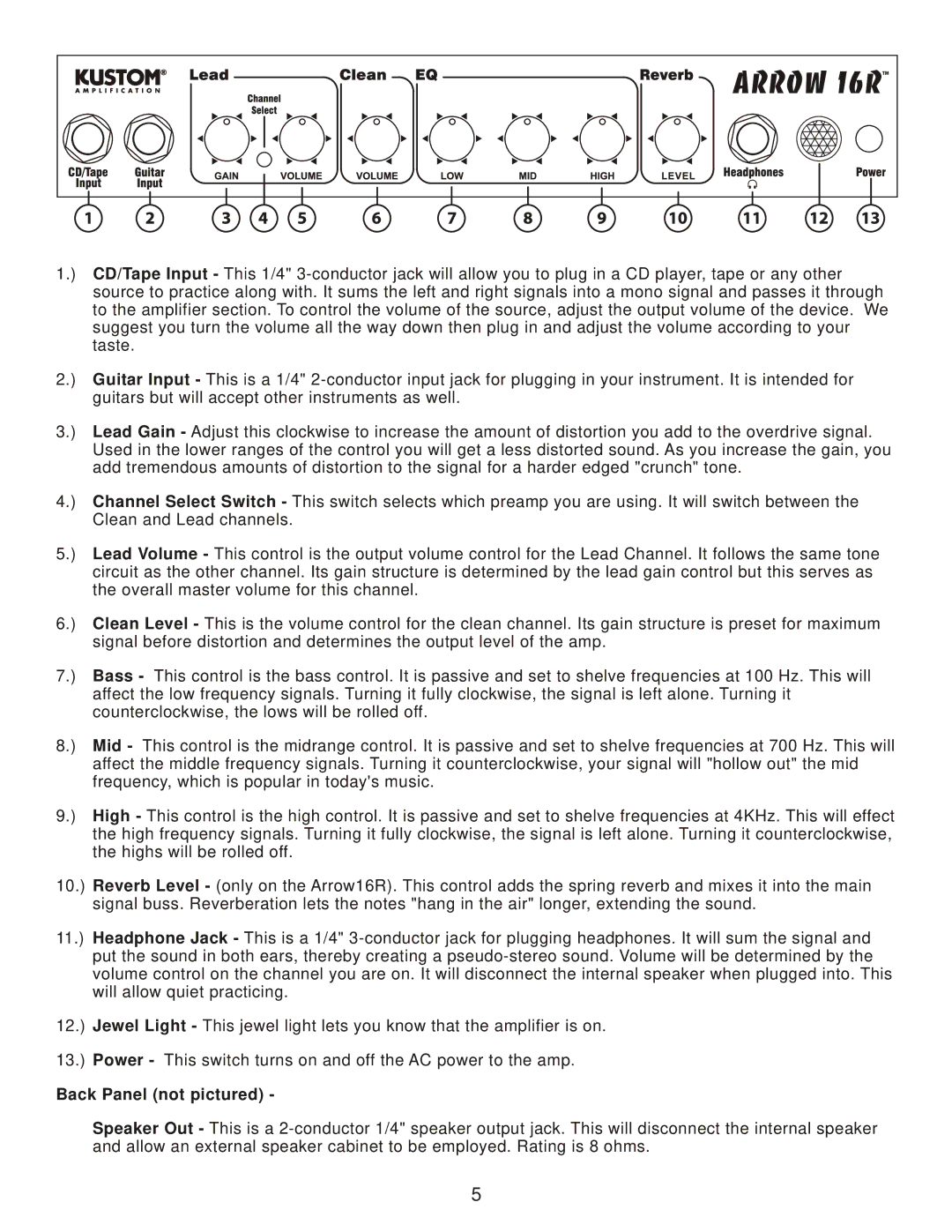Arrow 16, Arrow 16R specifications
The Kustom Arrow 16R and Arrow 16 represent a significant leap in portable amplification technology, designed to provide musicians and performers with robust sound solutions. These models are tailored for both professional and amateur users seeking high-quality audio output in various environments.The Arrow 16R is a powerful and versatile amplifier that features a 16-channel input system, allowing users to connect multiple instruments and microphones simultaneously. This versatile architecture makes it ideal for band performances, rehearsals, and studio sessions. Each channel is equipped with individual gain controls, allowing precise adjustments to ensure optimal sound quality.
The Arrow 16, while slightly less complex than its 16R counterpart, retains many of the same core features and offers a streamlined experience for users who require fewer channels. It comes with eight channels, catering well to solo artists and small groups without sacrificing sound clarity.
Both models showcase advanced digital signal processing (DSP) technology, which enhances audio quality and provides various sound effects and equalization options. Musicians can access reverb, delay, and modulation effects directly from the mixer, giving them the flexibility to shape their sound live without additional external processors.
One of the standout characteristics of the Kustom Arrow series is its built-in Bluetooth capability. This feature allows users to stream music directly from their smartphones or tablets, making it convenient for backing tracks during performances or casual listening sessions.
Portability is another key aspect of the Kustom Arrow line. With their lightweight design and sturdy construction, both models are easy to transport, making them ideal for gigs or impromptu jam sessions. In addition, they feature integrated handles for effortless carrying.
Furthermore, the Arrow 16R and Arrow 16 boast high-quality built-in speakers, delivering rich sound across a wide frequency range. This ensures that vocals and instruments are heard clearly, even in larger venues. The amplifiers also offer microphone and line inputs, making them suitable for a variety of applications, from karaoke nights to public speeches.
In summary, the Kustom Arrow 16R and Arrow 16 are sophisticated audio solutions that merge advanced technology, portability, and user-friendly features. Whether for professional gigs or casual gatherings, these amplifiers are designed to meet the diverse needs of musicians and audio enthusiasts.

